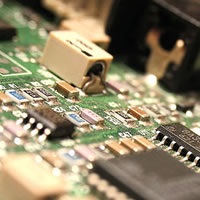So, what did they teach you in school? This is an accumulation of what I have been taught as an Electro-mechanical Engineer (EMET) at Penn State. This list is for my reference and for anyone else looking me up- it is good to reflect on what I have seen, and what I have done.
__________________________________________
Communications/Ethics
Effective Speech. Oral communication used to address practical problems, professional and civic. Effective public speaking, message analysis and evaluation.
Effective Technical Writing: Effective techniques for technical writing and communication. Analysis of technical documents, data selection, and presentation. Effective speech. Analysis of language used in technical documents.
Engineering Ethics- case studies of engineering ethics. Study of engineering codes and standard practices. Study of Globalization.
Business Plan Analysis- Fundamentals of an excellent business plan, study of corporate culture, research project working with the University of Kenya to reduce E-waste (see research).
__________________________________________
Electrical Engineering
Basic Circuits- Resistors, Inductors, Capacitors. Ladder networks.
Intermediate Circuits- Thevenin, Norton, Ladder Networks, Mesh Analysis, Y to Delta, Delta to Y conversions, some generators, impedance, admittance, conductance. Transistors and Diodes. Resonant frequencies, wave generators, resonant circuits. RLC circuits.
Operational Amplifiers- Operational Amplifiers. Transformers, AC to DC (DC to AC) Signals.
__________________________________________
Electronics Engineering
Basic Circuits- Number Systems, Codes, Binary, Hexadecimal. Logic Gates, Boolean Algebra and Logic Simplification. Combinational Logic Analysis, Latches, Flip-Flops and Timers. Adders, Subtratctors, Comparators, Decoders, Encoders, Multiplexers, Demultiplexers. Counters, Memory and Storage. Computer Concepts.
__________________________________________
Manufacturing Engineering
Manufacturing Processes. Atomic Structure, Bonding, Crystalline Structures, Non-crystalline structures, Engineering Materials. Stress-Strain Relationship, Hardness, Temperature effects, fluid properties. Viscoelastic behavior of polymers. Volumetric/Melting properties, Thermal, Mass Diffusion, Electrical properties, Electrochemical processes, Dimensions, tolerances. Surfaces. Alloys and phase diagrams, ferrous metals, nonferrous metals. Super-alloys, Metals Processing. Structure of ceramics, glass, “new ceramics”, ceramics processing. “Fundamentals of Polymer science”, thermoplastics, thermosets, elastomers. Composite materials. Metal matrix and polymer matrix composites. Casting technology, heating and pouring, solidification and cooling. Sand casting, Expendable-mold casting, mold design, foundry practices, casting quality, product design considerations. Properties of polymer melts, injection molding, extrusion, sheet and film, fiber production (spinning), coating processes, compression and transfer molding, blow molding, thermoforming, casting, polymer foam making. Rubber processing and shaping, Open and closed mold processes, some powder metallurgy.
Machining and Surface Processing
Machining Technology. Chip formation, merchant equation, power and energy relationships in machining, cutting temperatures. Turning, drilling, milling, analysis of related machinery. Centers and turning centers, high speed machining. Tool life, tool materials, geometry and fluids. Machineability, tolerances and surface finishes, cutting conditions and special considerations. Grinding, abrasive processes. Annealing, surface hardening. Heat treatment. Brazing, soldering and adhesive bonding.
Welding
Fundamentals of welding, welding design. Joints, physics. Arc welding, MIG welding. Weld quality. Materials and composition.
Rapid Prototyping and CNC Technology
Applications and fundamentals. IC Processing, Silicon Processing, Litiography. Layer processes. Numerical Control and industrial robotics. Flexible manufacturing systems. Fundamentals of production lines and automated production lines. Quality control, measurement and inspection.
__________________________________________
Mechanical Engineering
Elementary Statics. Practical applications of static concepts, scalar and vector quantities. Rectangular components. Moments and Couples, equilibrium for particles and rigid bodies. Truss, frame analysis, and pulleys. Centroids, center of gravity.
Strength of Materials. Concurrent Forces in a plane, said equilibrium. Resultants of non-concurrent forces in a plane. Equilibrium of a rigid body, column analysis, truss, frame and structure analysis, friction, axial loads, internal forces, bending loads, bending moment diagrams, shear, shear moment diagrams, Hooke’s Law, Shear stress and strain, torsion, beam analysis, deflection due to bending, Mohr’s circle, Bolts, rivets and welds to structural connections.
Dynamics. Classic Kinematics (particals and rigid bodies). Work and energy, impulse, momentum, mechanisms. Friction, springs. Moving systems including springs, pulleys, and pistons.
Machine Design. Design of shafts, bearings, springs, levers, gears, belts, mechanical drives. Select materials from a chart, calculate forces, design mechanical systems. Writing course emphasized documentation, accuracy and consistency. Column support, beam support. Welded and bolted connections; in depth stress analysis. Principle stress, combined stress. Heat treating.
__________________________________________
Parametric Modeling
Spatial Analysis and Computer Aided Drafting (CAD). Computer Aided Engineering using Solidworks and AutoCad. Spatial relations, functions of parametric modeling. 2-D and 3-D drawings of designs. 3-D solid models. Simulation of mechanical systems, design documentation, correct drawings, dimensioning, tolerances, network storage and retrieval. Auxiliary views, working drawings. Assemblies, constrained and unconstrained geometry. Fasteners, welds, sheet meal, layouts and bill of materials.
__________________________________________







No comments:
Post a Comment